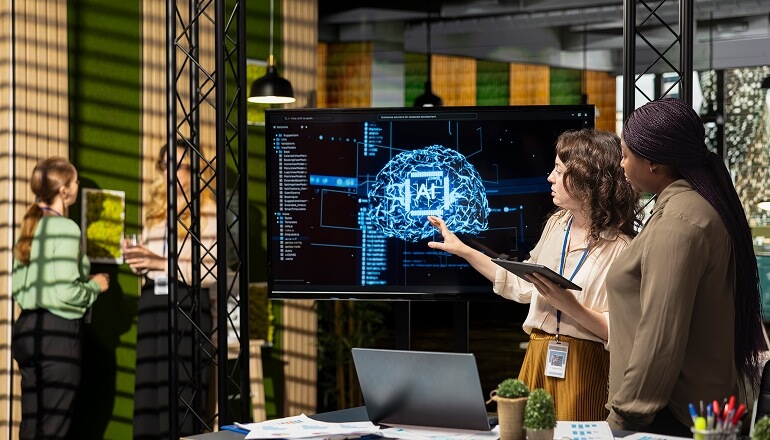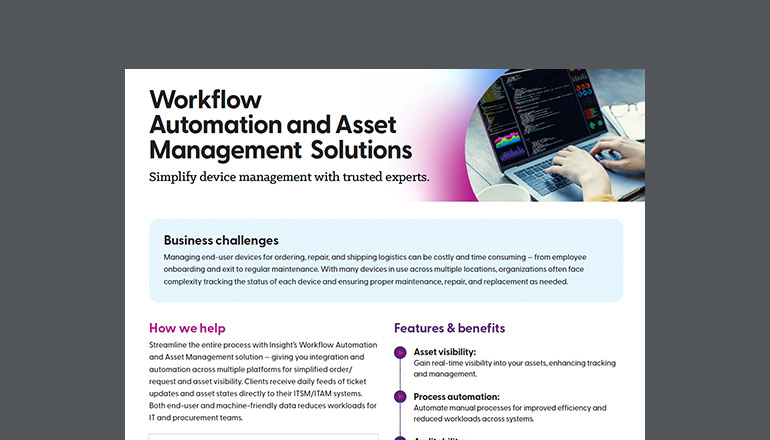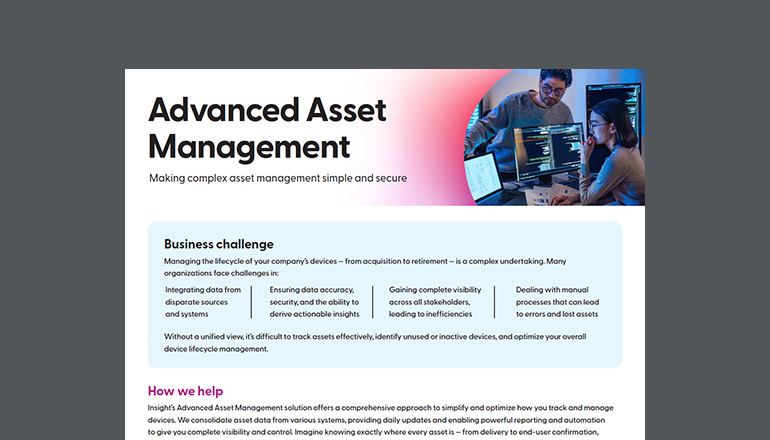Article IT Spending: Current Averages and Trends
According to Gartner, worldwide IT spending in 2019 is poised to grow by 3.2% from 2018’s tally, with a total global projected spend of $3.8 trillion.
By Insight Editor / 29 Oct 2018

Gartner’s Vice President of Research, John-David Lovelock, says, “While currency volatility and the potential for trade wars are still playing a part in the outlook for IT spending, it is the shift from ownership to service that is sending ripples through every segment of the forecast.”
Digital transformation is rocking each and every organization.
For example, more enterprises are adopting cloud services than ever before, rather than buying their own servers.
So, with a variety of pressures facing IT budgets worldwide, let’s look at some of the areas where organizations plan to concentrate their technology spend, as well as how each industry is tackling IT spending.
Averages and Trends in IT Spending Based On Industry
Enterprise IT Spending
A recent Spiceworks report revealed that 56% of IT buyers in large U.S. or European companies are expecting their IT budget to rise.
This trend seems to be a result of CEOs and board of directors making claims that their organizations are "innovative," "secure," and "digitally transforming," and raising IT budgets to make those statements possible.
For example, 64% of companies in the Spiceworks report were increasing IT spending to update outdated IT infrastructure.
Government IT Spending
The 2018 Canadian budget included quite a few technology initiatives, setting the framework for Canada’s technology plan for the rest of the decade.
The highlights were:
- $750 million put aside for cybersecurity across government entities. This includes the Liberals’ proposal to give the Communications Security Establishment (CSE) about $450 million over several years to create a new Canadian Centre for Cyber Security.
- $572 million has been pledged over five years to support the federal science ministry’s Digital Research Infrastructure Strategy around big data.
- Canada is on a digital transformation mission of its own: it has set aside $2.1 billion over six years – plus an additional $349.8 million per year afterwards – for Shared Services Canada (SCC) to continue modernizing the government’s IT services, systems, and infrastructure.
IT Spending For Small and Medium-sized Business (SMB)
IDC reported that worldwide SMB IT spending is expected to reach $602 billion in 2018, an increase of 4.9% over 2017. By 2021, IT spending is forecasted to continue to grow up to $684 billion.
According to the report, hardware, software, and IT services will each drive about 30% of IT expenditure, while business services will deliver the rest. The software category is experiencing the fastest growth and is expected to surpass hardware spending in 2019.
IT Spending For Financial Services
IT spending in the global banking industry will increase by 4.1% to $519 billion in 2018, according to Gartner. That growth is expected to continue as financial institutions continue to manage their hodgepodge of systems, platforms, software, and tools – which are mostly made up of legacy infrastructure.
In fact, Deloitte believes that the global banking industry will see a “modest step to a big leap” throughout 2018, as technology units within banks begin to transform and redefine themselves.
IT Spending By Solution
IT Security Spending
Due to a near constant influx of threats to every organizations’ data security, it is no surprise that IT security spending continues its upward trajectory. Gartner reports that worldwide IT security spending is expected to reach $124 billion in 2019, an 8.7% increase over 2018.
According to Gartner, security spending growth is largely attributed to three areas: security risks, business needs, and industry changes.
Additionally, security leaders have identified security as a way to become more competitive and drive overall business growth.
Cloud Computing
The International Data Corporation (IDC) reports in an update to its Worldwide Semiannual Public Cloud Services Guide that worldwide spending on public cloud services and infrastructure will rise 23.2% from 2017 levels to $160 billion in 2018.
By 2021, public cloud services spending is expected to reach $277 billion.
Experts anticipate that Software as a Service (SaaS) will continue its strong performance as the top cloud computing type, capturing nearly two-thirds of all spending. It is expected to account for $75 billion by 2020.
Enterprise Software
Of all categories, enterprise software is expected to see the highest growth in 2019, with Gartner predicting an 8.3% increase to $439 billion. Software as a Service (SaaS) across all software segments will drive this growth, particularly in the realm of customer relationship management (CRM).
The focus on CRM tools comes at a time where CIOs are increasingly focused on technology that improves the customer experience. In fact, 91% of companies with more than 11 employees reportedly use CRM software.
Hyperconvergence
Another area of high-impact growth is hyperconvergence integrated systems (HCIS), which will continue its meteoric rise in adoption rates. According to IDC, the market for HCIS boasts a five-year CAGR of 26.6% and is forecasted to hit $7.15 billion in revenue by 2021.
While this is by no means an exhaustive list of areas of IT expenditure, it highlights the top trending sectors in technology. With enterprises shifting storage from legacy architectures to software-defined systems, hyperconvergence will continue to roll forward.
Spending on IT Staffing
Heading into 2019, Canada is expecting higher than average salary increases across the board, with a reported 2.6% increase. This is consistent with the widening IT talent gap, as the demand for IT professionals continues to exceed the supply of qualified candidates.
In fact, these staffing challenges are becoming so pervasive within the industry that the digital talent gap has become one of the key CIO agenda drivers. And while not everyone agrees that the problem is dire, most forecasters continue to predict that only 400,000 computer science graduates will be available to assume the estimated 1.4 million IT positions that will need to be filled by 2020.
According to The Digital Talent Gap – Are Companies Doing Enough? the technology skills gap is consistent across the board. However, cybersecurity is expected to fare significantly worse than other technology sectors.
The trend is alarming. Today, only 14% of IT security managers feel there are enough cybersecurity threat management professionals deployed in the field. However, some estimates predict that there will be as many as 3.5 million unfilled cybersecurity positions by 2021.
Robert Half has identified these positions as the most "hard-to-staff" technology positions in Canada in 2019:
- Business intelligence analysts
- Cloud technology and security specialists
- Data scientists
- Database administrators and developers
- Developers (web, software, mobile)
- DevOps engineers
- Full-stack developers
- Security experts (data, information, network, systems)
Mobility
In its Worldwide Semiannual Mobility Spending Guide, IDC reports that mobility spending is forecasted to reach $1.63 trillion in 2018.
“Even industries that are typically slow to adopt technologies, such as construction and personal and consumer technologies, are implementing mobile strategies,” IDC program vice president of customer insights and analysis, Jessica Goepfert, said in the report.
With a compound annual growth rate of roughly 2.8%, mobility spending is expected to reach $1.8 trillion in 2022.






